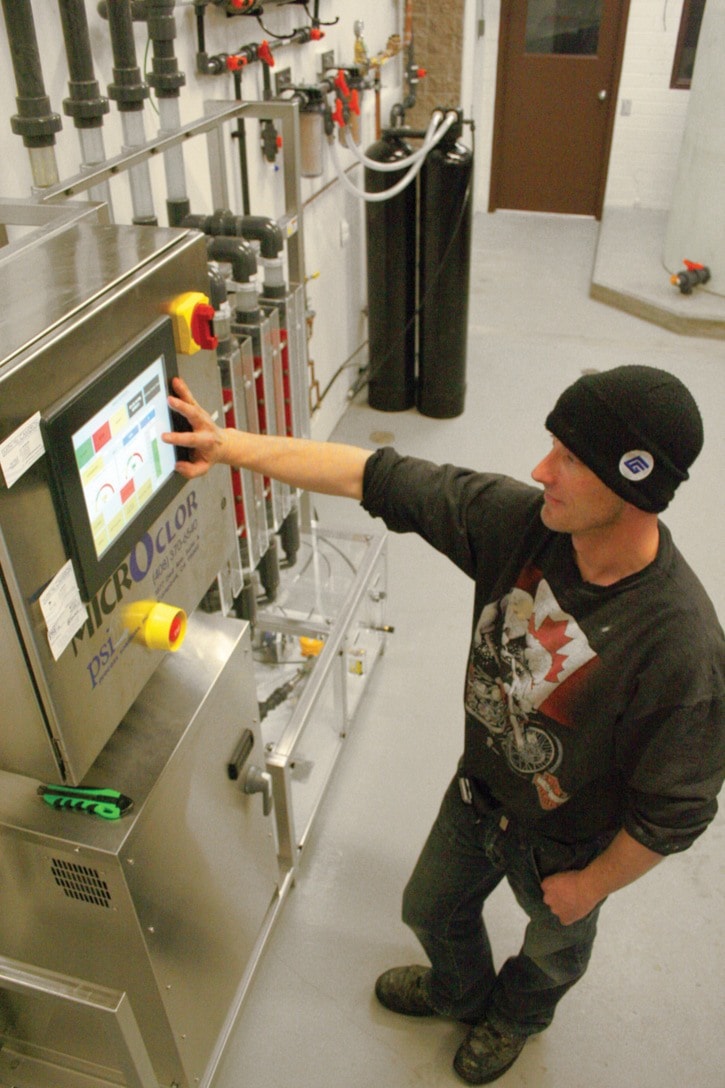The City of Williams Lake’s water system — a labyrinth of pipes and pump systems throughout the community — boasts some impressive stats.
One hundred and fifteen kilometres of water pipes that serve 11,500 residents; 450 system connections; five deep water wells 70 metres deep that produce one billion imperial gallons of raw water per year and six operators who ensure the level 3 water distribution system is maintained in tip top shape.
In the last few years the City has updated and modernized the way it sanitizes your drinking water.
A sodium hypochloride system has replaced chlorine gas that used to be added to the water to sanitize it.
The gas was stored at the Scout Island well sites.
“We used to have chlorine gas and we used to mix it with the water and inject it that way,” said Joe Engelberts, manager of water and waste for the City.
“We got away from chlorine gas which we possibly could have had five tones of liquid chlorine sitting down at Scout Island.
“We got rid of that for public safety and workers’ safety as well.”
Engelberts explained the current system consists of a salt water solution run through an electric plate that becomes sodium hypochloride which provides the disinfection.
Stations were updated in 2009 and 2011.
The sodium hypochloride is added at two parts per million for every million gallon of water; that level disinfects the liquid to Interior Health Authority’s drinking water standards.
The IHA administers the City’s water permit and therefore the City has to comply with “certain requirements throughout the year.”
Engelberts said the City tests the water on a daily basis for E-coli and coliform and samples are sent away once a week to an independent lab testing for those bacteria.
Water samples are also sent away on a quarterly basis to measure minerals such as arsenic and zinc in the water.
Two samples are sent away annually for raw water tests that check for hydrocarbons and volatile organic compounds.
Engelberts said the City also follows the drinking water guidelines as laid out by the federal government.
Before reaching the wellheads, the City’s potable water seeps through “sands and gravels.”
A confining layer of clay prevents against infiltration of water from the lake into the aquifer.
